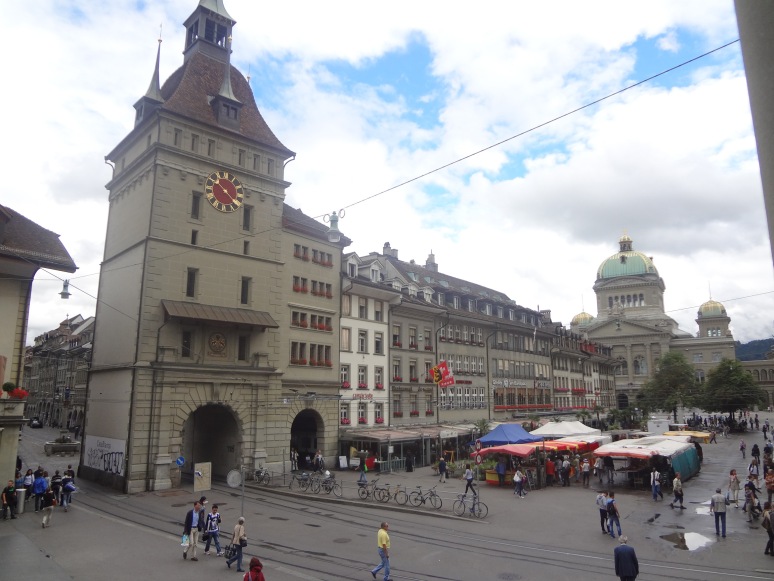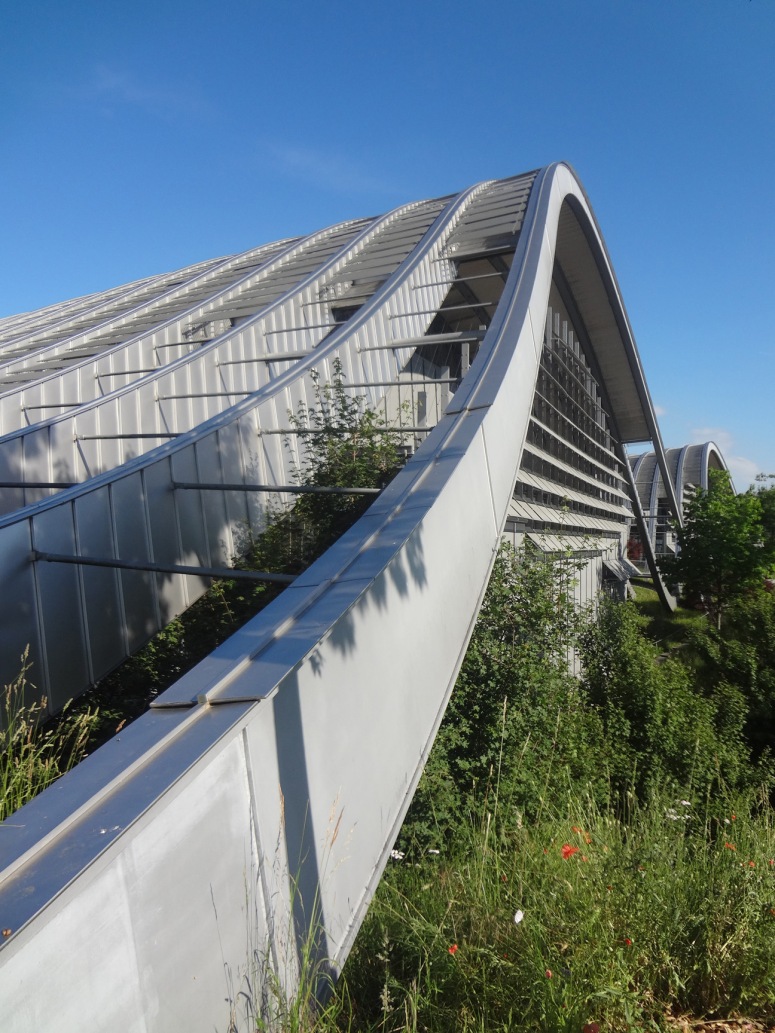Historical buildings, quaint alleys and breathtaking views make this gateway city to the alps a captivating weekend break
Built around a crook in the Aare River, Bern is the capital city of Switzerland and an Unesco World Heritage–listed Old Town. It’s cobbled center, ice-cold blue water and surrounding hills make this city the definition of a picture-postcard region.

Getting there:
The city of Bern lies in the heart of Switzerland and can be reached by plane, train or car.
Car: The capital has motorway links with Geneva, Zurich/Basel and the Bernese Oberland region. Motorway signs in Switzerland are green.
If travelling on Swiss motorways, you must have a vignette sticker, which can be purchased at train stations, petrol stations or post offices.
It is a requirement to drive with headlights on even during daylight hours on Swiss roads. Bern Airport is easily accessed by car.
Travelling from Aarau or Olten takes around one hour and from Fribourg or Biel takes only 45mins.
Plane: Bern Airport is small but connects with destinations such as Elba, Palma and Minorca. The airport bus takes passengers to Belp train station, which takes around 30mins. From there, you can take an S-Bahn to Bern main station.
Train: The train stations Belp and Rubigen offer connections with the following S-Bahn train numbers: S1 (Fribourg, Thun), via Rubigen, S3 (Biel/Bienne), via Belp and S31 (Münchenbuchsee), via Belp.


You can get to Bern Airport from Spiez, Interlaken, Grindelwald, and Lauterbrunnen via the shuttle-service Bernese Oberland.
As well as free travel on rail and bus lines, there are discounts on admission to local attractions. A four-day pass costs from CHF 240 (£184).
During the summer season, all regular flights from/to Amsterdam and from/to London City can be reached by shuttle-service.
TIP: Bus route number 160 connects to the train and Bern Airport. The bus runs every quarter-hour from 05h48 to 22h48 between Belp station and Bern Airport with direct connection to the S-Bahn.
Getting around:
Bike: Smide is a fast and eco-friendly mobility provider in the city of Bern. All you have to do is access the mobile app to find and book the next available e-bike and once you’ve reached your destination, you can park the e-bike anywhere within the city limits. The e-bikes are billed by the minute. Riders can earn free minutes by dropping the e-bike off at a bonus zone or at a charging station.
You can also bike-share to get around the city. Simply borrow bikes and e-bikes from fixed stations and can be borrowed using the SwissPass and the PubliBike app.
Public transport: Public transport in Bern is free for anyone who stays the night. If you stay in a tourist accommodation in the city of Bern, you will receive a Bern Ticket for your whole stay, which lets you travel for free on public transport in zones 100/101 operated by the LIBERO Association.
On arriving at the city, a reservation confirmation can be used as a transfer ticket from the station or the airport of Bern to your accommodation.
When you check into your hotel, be sure to activate your Bern Ticket using the Bern App on your Smartphone. Your booking number is your activation code.
TIP: The LIBERO Association’s Bern tourist ticket also includes the Gurten funicular, the funicular Marzilibahn, and the elevator to the Minster terrace, as well as travel to and from the airport.
What to see:
Bärenpark (Bear Park)
Situated at the eastern edge of the old city of Bern, next to the Nydeggbrücke and the River Aar, the Bear Park, which replaced the old Bärengraben (pits) in 2009, are a popular sight to see. Free of charge, the park incorporates the old pits for a total size of around 6,500 square meters.

The landscape ranges from forest areas, hill slopes, grasslands, and even access to the Aare River.

Bears are the symbol and name-giver of Bern.

You can take a gentle stoll from the old town to the bears by following Krammgasse down to the river.
Alternatively, hop on bus 12 to the Zentrum Paul Klee in BernAlternatively, use bus 12 from the Hauptbahnhof and through the old town to bus stop Bärengraben, the first stop once across the Nydegg Bridge and the Aare River.

TIP: For lovely views of Bern, go one stop past the Bärengraben and stroll back downhill or hike in the opposite direction up to the Rosengarten.
Bern Münster Cathedral of St Vincent
Also known as the Cathedral of Bern, the building is a Swiss reformed cathedral in the old city. Designed in the late-Gothic style, it’s the most important late medieval church in Switzerland.

Construction started in 1421 with builders working over successive generations, with completion of the he steeple in 1893.

The three-aisled basilica without a transept towers above the roofs of the old town is the largest religious building in Switzerland.


Opening hours: Easter to Oct Tues-Sat 10am-5pm, Sun 11:30am-5pm; Nov-Easter Tues-Fri 10am-noon and 2-4pm, Sat 10am-noon and 2-5pm, Sun 11:30am-2pm. The viewing platform closes 30 mins before cathedral

Cost: Entry to the cathedral is free but access to the viewing platform costs viewing platform 5F (adults) and 2F (children).
TIP: From this highest church tower in Switzerland you can admire the splendid view over the city and of the snow-covered mountains of the Bernese Oberland.
Zytglogge
One of the city’s best-known landmarks, the Clock Tower was once a city gate but now attracts visitors from all over the world.

The ornate astronomical calendar clock was created in 1530 and it is thought that the clock tower supposedly helped Albert Einstein hone his special theory of relativity, developed while working as a patent clerk in Bern.

If you decide to take a tour of the historic building, you can examine the gears and the apparatus of the old clock. You can also see the astronomical calendar clock, the Astrolabium, on the eastern side of the tower and discover how it works.

A public tour lasts 1 hour and costs 20.00 CHF (adults) and 10 CHF (6-16 years). The meeting point for the tour is the Zytglogge on Kramgasse alley.
TIP: Every hour the clock chimes and medieval figurines appear. Dancing bears, the cheeky fool and the crowing rooster all make for an enjoyable watch.
Old City
The old medieval city center was entered onto UNESCO’s listing of World Heritage Sites in 1983. Along with the area’s unique arcades, the historical townscape hosts the Zytglogge, the Prison Tower (Käfigturm), Renaissance fountains and the cathedral.





Zentrum Paul Klee
The wave-shaped steel and glass structure was designed by the Italian architect Renzo Piano and erected on the outskirts of the capital city in 2005.

The museum holds the most significant collection of Klee’s works in the world.

The building’s three curved ‘hills’ makes it blend into the surrounding rolling landscape.
The area is enclosed by fields and a spacious park, making it an ideal walk.
TIP: If you take the paths that circle the Zentrum Paul Klee, you’ll come across 18 named after Klee’s masterpieces. The museum awaits visitors at the address of “Monument im Fruchtland 3” (Monument in a Field 3).
Opening hours: Tue – Sun 10am-5pm
Cost: A standard ticket costs CHF 20 and a child’s ticket (6–16) costs CHF 7
Bernisches Historisches Museum/Einstein Museum
The second largest historical museum in Switzerland, the building was designed by the Neuchâtel architect André Lambert and built in 1894.
Approximately 1000m² of exhibition space in the Einstein Museum offer an account of the life of the physicist, containing around 550 original objects, in addition to illustrating the history of his time.
Opening hours: Tue – Sun 10am-5pm
Cost: An adult ticket ranges between 13-20 CHF and a child’s varies 4-10 CHF
TIP: In the winter, Switzerland uses Central European Time (CET). From the end of March to the end of October, it observes Daylight Saving Time (CET + 1 hour).
TIP: Some shops may have differing opening hours. Some stores in the lower part of the Old City, from Zytglogge (Clock Tower) downward, don’t open until 10:00am.
Bern Bridge
This last covered wooden bridge in Fribourg dates back to 1653. The first bridge of the city, the pont de Berne would have been supported by timber trestles.

The central stone pillar and deck were replaced in 1853-54,and its roof in 1885.

In 1340, the bridge was sawn down to ward off an attack by encroaching Bernese invaders.
Opening hours: 24/7
Cost: Free
Checking out C & J.
